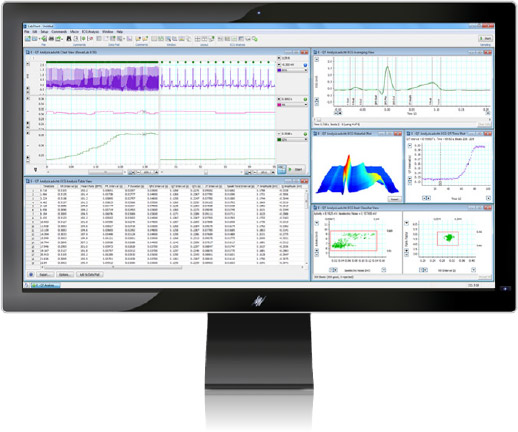In this webinar, Lee Stoner, PhD and Gabriel Zieff, MA provide a complete, in-depth overview of their research involving Pulse Wave Velocity (PWV) in a variety of different applications and a deep dive into the methods they use to record high-quality, repeatable data.
Key Learning Objectives:
- Meaning and clinical importance of pulse wave velocity
- How to measure and interpret pulse wave velocity
- Considerations for internal- and external-validity
- Considerations for the measurement of pulse wave velocity of various study designs and populations
Abstract:
Arguably, the “gold-standard” method for noninvasive assessment of cardiovascular disease risk is pulse wave velocity. The PWV is widely used in both epidemiological and physiological studies to assess arterial stiffness, a construct dependent on the functional and structural characteristics of a vessel. PWV is calculated by measuring the transit time of the arterial waveform between two points of a measured distance. The most widely studied path is between the carotid and femoral arteries, which represents the aorto-illiac pathway. Traditionally, these measurements are made using tonometers, which are highly sensitive pressure transducers. However, alternative approaches to tonometry are available, and pathways other than the aorta can be measured. These alternative approaches may be better suited for use with certain populations or study designs. The focus of the presentation will be to assist the audience in identifying the correct research tool for their particular research paradigm.
Specifically, these experts will begin by outlining the theoretical principles underlying PWV, as well as the importance of this measure to both epidemiological and physiological studies. Subsequently, they will highlight some of the different approaches for measuring PWV, including technical considerations. This will be followed by discussion pertaining to the identification of the appropriate PWV measure for the specific study design and populations of interest. This will include consideration of internal and external validity. They will end the session by providing some tips to facilitate high-quality PWV assessments.
Related products:
IR Plethysmographs»
Non Invasive Pulse Tonometer»
Research PowerLabs»
Bridge Amps: Pressure, Force and Light Amplifiers»
Additional resources:
Pulse Wave Velocity Webinar (Dr. Nabeel P M)»
Exploring cardiac and vascular function in monogenic syndromes of hypertension and hypotension (Keith Siew)»
Abnormal-breathing research in the Himalayas»
Invasive Blood Pressure – fundamentals and best practices for preclinical research»
How to Calibrate a Millar Catheter using the Pressure Gauge Kit»
About the speakers:

Lee Stoner, PhD, MPH
Assistant Professor, Exercise and Sports Science
University of North Carolina at Chapel Hill
Lee's lab investigates the interactions between lifestyle behaviors and cardiometabolic health. Specific inter-related interests include: (i) Interactions between lifestyle behaviors and cardiometabolic disease etiology across the lifespan, with a particular interest in sedentary behavior and young adults. (ii) The development and interpretation of methodologies for assessing cardiometabolic health. (iii) The translation of basic and applied science into public health outcomes.

Gabriel Zieff, MA
Doctoral Candidate, Exercise and Sports Science
University of North Carolina at Chapel Hill
Gabe's broad research interests encompass the effects of lifestyle behaviors on cardiovascular health with an emphasis on assessing the cardiometabolic risk associated with psychological stress and sedentary behavior. When he's not in the lab, he also enjoys playing/coaching soccer, playing music, and consuming dark chocolate.

ECG (EKG) Analysis Module for LabChart
The ECG (EKG) Analysis Module for LabChart automatically detects and reports PQRST onset, amplitude and intervals in real time, or after recording.
Contact us for more information.